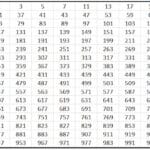
Understanding the binary system
Each digit in a binary number is called bit, which is an abbreviation for “binary digit”. In the binary system, each position represents a power of 2. The rightmost bit is called the least significant bit (LSB), and the leftmost bit is called the most significant bit (MSB). For example, the binary number 1001 can be broken down as follows:
(1 * 2^3) + (0 * 2^2) + (0 * 2^1) + (1 * 2^0) = 8 + 0 + 0 + 1 = 9
To convert a decimal number to binary, we can use the method of successive divisions by 2. We will see this process in detail below.
Successive Division Method
This method consists of dividing the decimal number by 2 successively, and taking the remainder of each division as the digit of the binary number. The process is repeated until the quotient is less than 2. The binary number is obtained by reading the remainders from bottom to top. Let's see an example to convert the decimal number 45 to binary using this method:
1. 45 / 2 = 22 (remainder: 1)
2. 22 / 2 = 11 (remainder: 0)
3. 11 / 2 = 5 (remainder: 1)
4. 5 / 2 = 2 (remainder: 1)
5. 2 / 2 = 1 (remainder: 0)
The resulting binary number is 101101.
The reverse process, converting a binary number to decimal, is just as easy. We multiply each binary digit by the power of 2 corresponding to its position and add the results.
Using online tools
While it's important to understand the manual conversion process, there are several online tools that allow you to quickly and accurately convert numbers from decimal to binary and vice versa. Some of the most popular include:
- RapidTables Binary Calculator
- BinaryHexConverter online converter
- BinaryTranslator conversion tool
Using these tools will allow you to practice and speed up converting numbers between systems.
Practicing binary conversion
Mastery of the binary system requires practice. Consider the following tips to improve your skills:
1. Perform manual conversions: convert decimal numbers to binary and vice versa using the method of successive divisions.
2. Check your results: use online tools to check the answers obtained manually and detect possible errors.
3. Learn other number representations: Once you're comfortable with binary conversion, explore other number systems like octal or hexadecimal.
Practical applications of the binary system
The binary system is applied in various areas, some of which include:
1. Computers and Tablets: Computers use the binary system to perform logical and arithmetic operations.
2. Coding: The binary system is used to represent characters in programming languages such as ASCII and Unicode.
3. Cryptography: The binary system is crucial in encryption and decryption algorithms used to guarantee the privacy and security of information.
Understanding and mastering the binary system will allow you to tackle problems and projects in these areas with greater confidence and effectiveness.



